#cwmorthin
Text
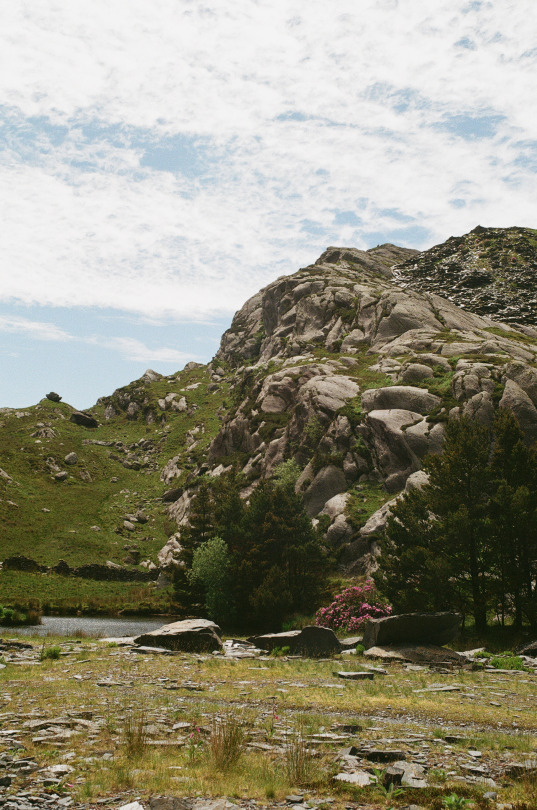
Cwmorthin, Gwynedd. 2021.
#cymru#gogledd cymru#gwynedd#wales#north wales#cwmorthin#cwm orthin#cofiwch cwmorthin#35mm film#original photography#film photography#colour film
16 notes
·
View notes
Text



Cwmorthin Slate Quarry, North Wales.
1 note
·
View note
Text
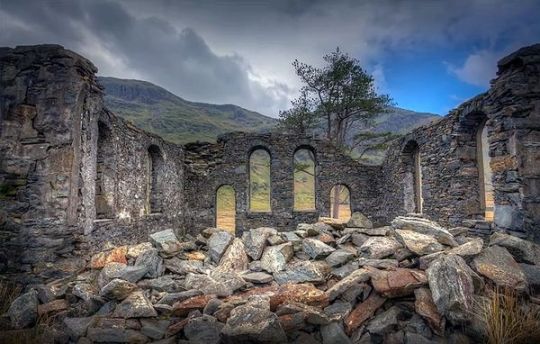


Photography by Jason Jones. Statement by Jon Norris:
What We Leave Behind
I follow several British and Canadian landscape photographers on YouTube. Their channels are a never ending source of wonder and pleasure for me. I so admire their enthusiasm and energy to travel to remote places where Earth's natural beauty has survived the degradation of humanity. They get up at 3:00 in the morning and set up their cameras on some freezing hilltop to catch the rising sun coming over the horizon. I was like that in my youth. I had my mornings on those freezing hilltops!
Quite often the landscapes they photograph contain ruins of old castles, cathedrals, ancient walls, and viaducts... remnants of vanished empires being reclaimed by nature's genius... what Capability Brown would have called 'the spirit of the place' (genius loci)... or what Trungpa Rinpoche would have called 'the dralas'... that unspoken something that we perceive as picturesque and makes the hair stand up on our necks. I think what we are really seeing in those pictures is our impermanence... our death... we just find other words to say it.
One of my favorite YouTube photographers is Jason Jones who lives in Wales, and if ever there was a place on the planet that bears the scars of humankind, it has to be Wales! Recently Jason took some pictures in the Cwmorthin Slate Quarry west of the village of Tanygrisiau in north Wales. It wasn't a good day. His camera lens wouldn't focus and the sunlight wouldn't cooperate, but he took some pictures anyway. In case you don't know, there are quarries all over Wales. That place has been supplying Europe with minerals since the Stone Age. Hardly a hill exists that isn't topped with an iron age hill fort or an industrial age mine shaft.
But on this particular day, Jason found an old abandoned church and farm house. [I attached some stills below.] These buildings had never been grand things... they were made of rough stones that were now falling down. And yet as I looked at the walls of that empty church, I could almost hear the people reciting their psalms and singing their hymns in those excellent Welsh voices. I could see those poor people barely scraping a living out of that remote valley. Poor people christening their babies and marrying their neighbors and burying their parents generation after generation. Minister after minister trying to preserve a foreign faith that had been imported from Rome, where it had been imported from Constantinople, where it had been imported from Jerusalem. Ministers wrestling with the remnants of Paganism, and Catholic conversion, and plague, and the Norman Conquest, and Henry VIII's Act of Supremacy, and on and on.
Somehow I could see those people sitting in their rough-hewn pews back when the arched windows still had stained glass images of the four apostles glowing red and gold in the sunlight. It must have been so comforting. And yet I have to wonder... was any of it real? Was there anything more to it than a convocation of souls helping each other to maintain the illusion for one more day? And imagine their grief when it all came to an end. Where was their foreign god then?
In the picture of the farmhouse you can see a mountainous slag heap from the slate mine piled high in the background. And when that mine shut down, the valley literally died. It stands empty to this day. There must have been a last sermon and a last prayer and a last hymn, and finally the last minster locked the door. How could those people bear it?
And the same for the farm houses, when the last farmer led the last cow away, and then the valley had no more voices... only the sound of the wind in the grass. And then... and then... many years later... Jason Jones got up early one morning and walked up that lonely road for miles with his camera. He took his pictures, and then he edited his video for YouTube and posted it in Wales. And I watched it in bed this morning in Maine, and shared the experience on Facebook. And you found it here in your news feed. And all of this madness arose in primordial consciousness like an infinity mirror that has no beginning and no end. Oh yes... those landscape photographers are a different breed!
All who wander are not lost.
1 note
·
View note
Text
Deep Sleep Hotel: Discover world’s deepest hotel that has you sleeping 419 meters underground!
Located in an abandoned mine, 419 meters under the mountains of Snowdonia, in Wales, the Deep Sleep Hotel is known as the world’s deepest hotel.
Comprised of four private twin-bed cabins and a grotto room with a double bed, a dining area, and toilet facilities, it is a hotel unlike any other.
Set deep within a section of the abandoned Cwmorthin slate mine, 1,375 feet (419 meters) underground,…

View On WordPress
0 notes
Photo

~ Canada geese call to each other in the mist ~
Olympus XA2 and Kodak Ultramax 400
#Cwmorthin#landscape photography#original photographers#photographers on tumblr#film photography#Olympus XA2#kodak ultramax 400
518 notes
·
View notes
Photo

Another image of the path through Cwmorthin Quarry near Blaenau Ffestiniog. @visitwales @leefilters @walesonline @canonuk #slate #slatequarries #cwmorthin #cwmorthinquarry #wales #landscapephotography #landscape #landscapephoto #landscapephotographer #welshlandscape (at Cwmorthin Quarry) https://www.instagram.com/p/BvZNKE3nI5L/?utm_source=ig_tumblr_share&igshid=1emcppy3fr73b
#slate#slatequarries#cwmorthin#cwmorthinquarry#wales#landscapephotography#landscape#landscapephoto#landscapephotographer#welshlandscape
3 notes
·
View notes
Photo
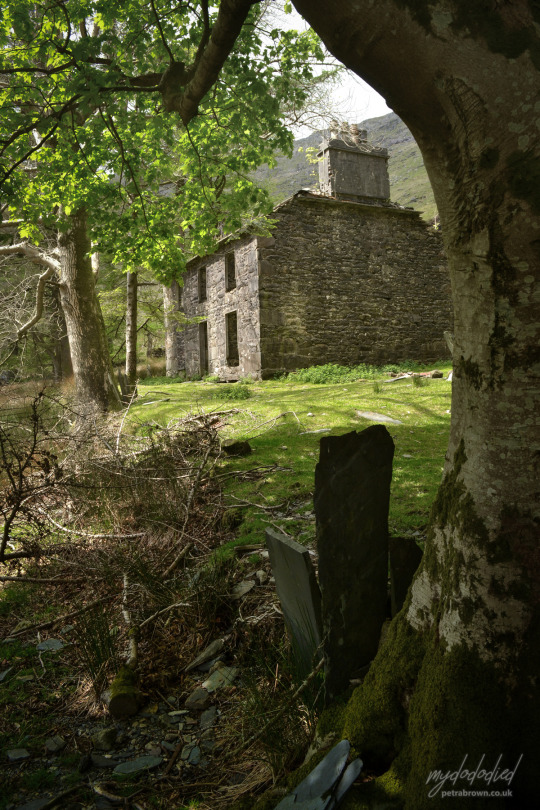
The Manager’s House - Cwmorthin
#original photo blog#original content#photographers of tumblr#mydododied#Wales#original photography blog#abandoned house#abandoned#derelict#nature#trees
177 notes
·
View notes
Text
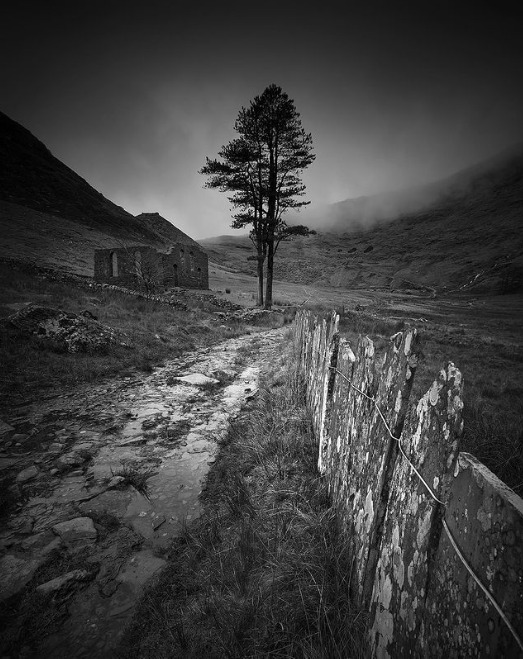
Noel Boddle
Cwmorthin Quarry
North Wales
57 notes
·
View notes
Video
41940 by Ben Abel
Via Flickr:
The tracks heading away from Tanygrisiau railway station on the Ffestiniog Narrow Gauge Railway in the village of Tanygrisiau, near Blaenau Ffestiniog in Gwynedd, North Wales. The station serves the slate mining village of Tanygrisiau and was opened in March 1866. It closed to passengers on 15 September 1939. The new station opened for passenger traffic on 24 June 1978 and was the passenger terminus until 25 May 1982. Tanygrisiau station is at a height of 669 ft and a distance of 12 miles from Porthmadog. The new station is on a different alignment and grade from the old, the two alignments joining just to the north of the Blaenau end of the station. The old line was on a continuous downward gradient from that point through the station, but the new line is on an uphill gradient (to pass the nearby power station) and is more sharply curved. One of the old buildings still remains, visibly lower than the new trackbed. Tanygrisiau station has an operational passing loop but is normally operated as an unstaffed halt and trains only call on request. Intending passengers are advised to check with the Ffestiniog Railway Company before embarking on their journey. The station is close to the Cwmorthin water falls, and the train passes Tanygrisiau hydro-electric pumped-storage power station and Tanygrisiau reservoir. Information Source: en.wikipedia.org/wiki/Tanygrisiau_railway_station
#Wales#Welsh#Cymru#North Wales#UK#United Kingdom#GB#Great Britain#Britain#British#Snowdonia#Gwynedd#Snowdonia National Park#Vale of Ffestiniog#Ffestiniog#Tanygrisiau#below the steps#slate mining#Ffestiniog Railway#village#quarry#quarrying#Ffestiniog Narrow Gauge Railway#Narrow Gauge Railway#Narrow Gauge#Tanygrisiau railway station#Tanygrisiau train station#Tanygrisiau station#railway station#Train station
3 notes
·
View notes
Video
38654 por Ben Abel
Por Flickr:
Tanygrisiau railway station on the Ffestiniog Narrow Gauge Railway travels through Tanygrisiau a village near Blaenau Ffestiniog in Gwynedd, North Wales. The station serves the slate mining village of Tanygrisiau and was opened in March 1866. It closed to passengers on 15 September 1939. The new station opened for passenger traffic on 24 June 1978 and was the passenger terminus until 25 May 1982. Tanygrisiau station is at a height of 669 ft and a distance of 12 miles from Porthmadog. The new station is on a different alignment and grade from the old, the two alignments joining just to the north of the Blaenau end of the station. The old line was on a continuous downward gradient from that point through the station, but the new line is on an uphill gradient (to pass the nearby power station) and is more sharply curved. One of the old buildings still remains, visibly lower than the new trackbed. Tanygrisiau station has an operational passing loop but is normally operated as an unstaffed halt and trains only call on request. Intending passengers are advised to check with the Ffestiniog Railway Company before embarking on their journey. The station is close to the Cwmorthin water falls, and the train passes Tanygrisiau hydro-electric pumped-storage power station and Tanygrisiau reservoir. Information Source: en.wikipedia.org/wiki/Tanygrisiau_railway_station
10 notes
·
View notes
Text
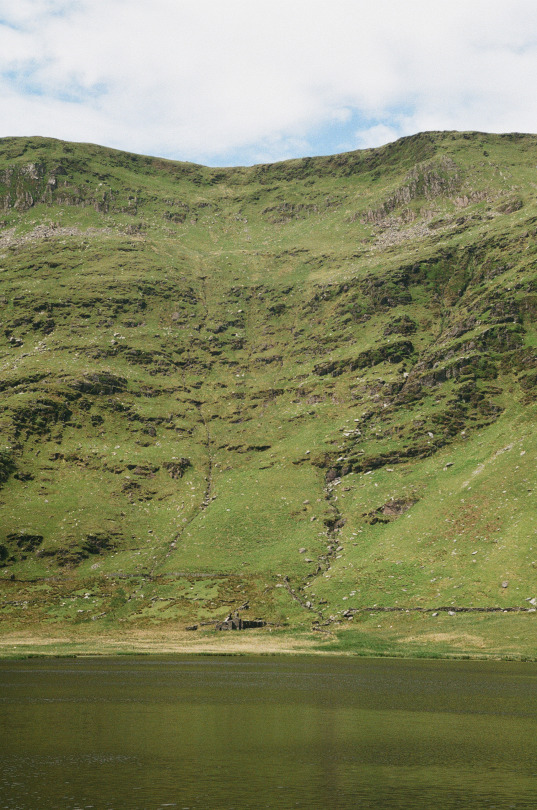
Cwmorthin Quarry, Tanygrisiau. 2021.
#Cwmorthin Quarry#Tanygrisiau#cwmorthin#north wales#cymru#gogledd cymru#wales#colour film#35mm film#film photography#landscape#quarry#welsh industry#mountains#lake#photo diary
9 notes
·
View notes
Photo

How has this view changed since these houses were built in the 1860s? The Cwmorthin Terrace of quarrymen's houses was built in two phases, the first eight houses of roughly dressed stone in the 1860s and the five remaining houses built of slate in the 1870s. The slate houses have survived much better but this first stone house has received a little loving care, including the clearing of rubble inside to reveal the remains of the slate floor. By all accounts this could be a miserable place to live. A number of children died of diphtheria due to the failure to look after the sewage system. The view must have been as fickle as the weather. The sounds of nearby slate working must have been unceasing during the day. But 150 years ago people must have looked out through this door on the same hills. [Image description: colour Instagram photo of a stone built, mortared, wall with an empty doorway in it, looking out over grass, rising mountains, and a strip of blue sky. Above the door the wall is ruined and a small amount of sky is visible.] #ImageDescription #Snowdonia #SnowdoniaNationalPark #eryri #wales #cymru #IndustrialHistory #FindYourEpic #ThisIsMyAdventure #AwakeTheSoul #KeepItWild #hiking #travel #TravelPhotography #adventure #NaturePhotography #GetOutside #UKHikers #wanderlust #DiscoverEarth #PeopleWhoAdventure #NotTheSafeRoute #snowdoniagram #ThisIsMyWales #mountains #cwmorthin #BlaenauFfestiniog https://www.instagram.com/p/CDZ5b8oJGcp/?igshid=k65jwjzdeb5j
#imagedescription#snowdonia#snowdonianationalpark#eryri#wales#cymru#industrialhistory#findyourepic#thisismyadventure#awakethesoul#keepitwild#hiking#travel#travelphotography#adventure#naturephotography#getoutside#ukhikers#wanderlust#discoverearth#peoplewhoadventure#notthesaferoute#snowdoniagram#thisismywales#mountains#cwmorthin#blaenauffestiniog
4 notes
·
View notes
Photo

Discussing 'Ambush (Memorial to the Ancient Welsh Who Defended Their Land)' by Jonathan Peter Smith
Invading armies into North Wales reported how the ancient Welsh would suddenly appear, as if from nowhere with a cacophony of noise, ferocious violence and arrows (being some of the best archers in the world) and then disappear into the woods in a stealth like way, leaving the invaders totally disorientated. The painting above
'Ambush (Memorial to the Ancient Welsh Who Defended Their Land)' evokes this ambush tactic that the ancient Welsh perfected.
This small abstract artwork came out of my weekend experience in North Wales, around Blaenau Ffestiniog and Cwmorthin and is one of many Wales based paintings I have done. It conveys a deep sense of place (history, multiple viewpoints, textures, climate, features of that place) and my experience within that place. An artist I was really getting into at the time was Peter Lanyon.
Cwmorthin is a strange place: it is a spacious valley landscape with a lake and is tranquil with delicate colours that blend and harmonize into each other (I was there in Autumn in an Indian Summer); and then it is pockmarked with bleak slate hills and ruins of the brutal 19th C industrial mining past and some of the ruins are almost blackened and crumbling down, yet these ruins are also beautiful in a strange poetic way.
Interest in History From Childhood:
This kind of historical landscape where history marks the present, is the kind of one I used to visit as a child with my father, for example in the Isle of Sheppey with world war ruins of pillboxes on a landscape perched on cliffs, and I dug up historical artifacts thinking I was Indiana Jones!! This immersion into archaeology and history started as a child. I like reading about history and political history, and I wanted to understand the place of North Wales better before I painted it.
I have combined many viewpoints around Blaenau and Cwmorthin and multiple experiences of a particular day into this painting:
-the pattern on the homemade cake I ate that day (which was delicious) is worked into the vertical form.
-the vertical form also references the many ruined buildings around Cwmorthin.
-the harsh crumbly textures of the ruins feature on that form also.
-an old mining track into the hill in another area nearby is also in that vertical form.
-the climate, airiness, space and colours of the pastoral side of that area is evoked.
-my happy mood that day and on that trip is in the joyful happy colouring.
-the book I purchased that day on 'The Battles of Wales' by Dilys Gater, is referenced in the ambush evocation in this painting:
Historical Narrative evoked in an abstract form:
I began this page by telling you about the ancient ambushes, I have created a kind of narrative in the painting from left to right, in the most abstract way: The two red arrows are the invader with blood on their hands. They travel through the lush landscapes blissfully unawares that they are being monitored and led into a trap...
Then suddenly, the disorientating vertical form traps them. This painting ( if you click on the painting you will be able to see more clearly) is actually a kind of triptych with three parts put together. This vertical form recedes back from the rest of the painting's surface, like an archaeological excavated hole below ground (further evoking a sense of history and the past within a place). This is meaningful to the narrative in how the invaders fall into this trap as it were. The ferocity of arrows attacking them from wooded trees is evoked. This whole form serves as a disorientating effect to evoke this warfare tactic the Welsh perfected successfully. The sudden violence came and then went leaving the invaders completely bewildered and disorientated. Then the red arrow disappears off the painting, defeated. The ancient Welsh tribes won many battles but lost many also.
But also, this painting functions on another level: this is abstract and has its own life and personality and is to be enjoyed for its own sake, by the visual feast of colour, texture, shapes, design and rhythms.
Painting's details:
'Ambush (Memorial to the Ancient Welsh Who Defended Their Land)',
signed on verso
2016
30 x 40cm
acrylic and collage on card
£ 300. 00 (delivery and shipping costs will be added to this)
contact e-mail: [email protected]
1 note
·
View note
Photo
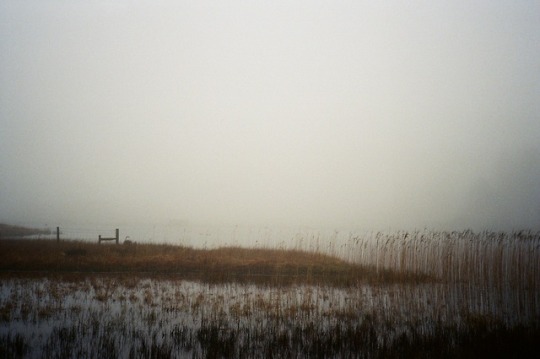
~ Cwmorthin ~
Olympus XA2 and Kodak Ultramax 400
#Cwmorthin#landscape photography#original photographers#photographers on tumblr#Olympus XA2#film photography
47 notes
·
View notes
Photo

Challenge 12 - Free For All
Cwmorthin
This week’s day off was spent roaming around abandoned slate quarries in the mist and drizzle. Recent rains have left the hills waterlogged and in the valley muffled by low clouds the only sounds were those of the countless cascades, streams and waterfalls draining the land.
Canon 700D, 1/6 sec at 100ISO
Lightly tweaked in Canon DPP4
Hi @mhplanet, sounds like a great way to spend the day off, you paint a wonderful picture both with your photo and your description-Mojo.
40 notes
·
View notes

